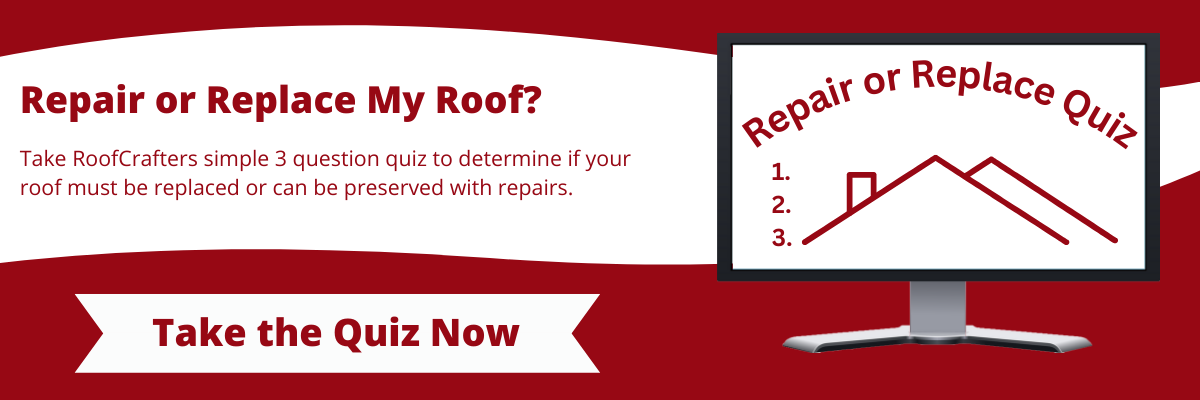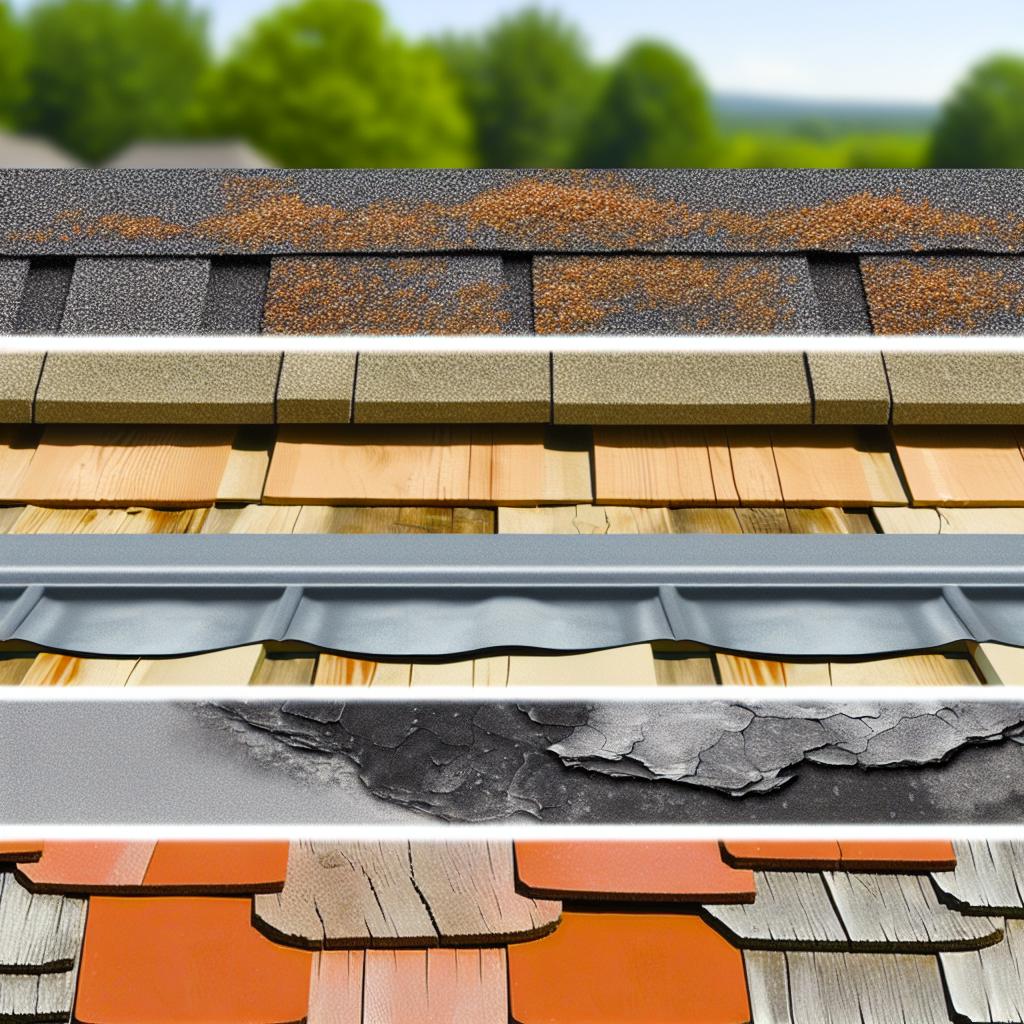
When we think about our homes, the roof might not always grab the spotlight, but it's undeniably a key player in keeping us comfortable and protected. Over time, every roof faces the inevitable battle against weathering. Whether it's the relentless beating sun, pouring rain, or the occasional hailstorm, these elements can really take a toll on the materials up top.
At RoofCrafters, we know that when it comes to weathering, asphalt shingles might start losing their protective granules after repeated downpours, leading to faster aging under the sun’s harsh rays. Metal roofs, although sturdy, aren’t immune either. They can face issues like corrosion or fading paint, especially if they’re constantly battling salty sea air or heavy rain.
And those picturesque tile roofs? They can crack or chip if they're hit by debris or undergo rapid temperature changes. So, if you’re starting to see some signs of roof weathering on your humble abode, stay tuned until the end of this article to understand its impacts! Let’s get started.
Is My Roof Susceptible to Weathering?
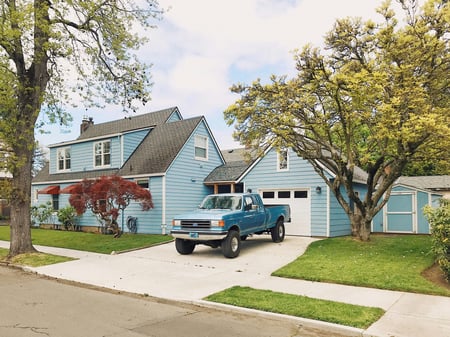
Sadly, yes, your roof is quite susceptible to weathering due to its constant exposure to the elements. The specific effects and rate of weathering can depend on several factors:
Material: Different roofing materials have different levels of durability and resistance to weathering. For example:
- Asphalt shingles are very common and have a typical lifespan of 15-30 years, but they can be susceptible to cracking, blistering, and loss of granules due to UV exposure and temperature fluctuations
- Metal roofs are more durable and resistant to weathering, typically lasting 40-70 years, but they can be prone to corrosion without proper coatings.
- Tile roofs (clay or concrete) are very durable against weathering, often lasting over 50 years, but they can crack or break if impacted.
- Wooden shingles or shakes are susceptible to rot, mold, and insect damage, especially in moist or humid environments, unless treated with preservatives.
Climate: The local climate plays a significant role in how your roof weathers. Roofs in areas with extreme temperatures, frequent storms, high humidity, or high UV exposure will generally weather faster than those in more temperate climates.
Installation and Maintenance: Proper installation and regular maintenance can significantly extend the life of a roof. Issues like improper installation of shingles or inadequate ventilation can accelerate weathering and deterioration.
Direction and Slope: Roofs that face the sun directly (typically south in the northern hemisphere) will often weather faster due to increased UV exposure. Similarly, the slope of the roof affects how well it sheds water and debris, influencing how quickly materials deteriorate.
To mitigate weathering effects, regular inspections and maintenance are crucial. This includes cleaning gutters, removing debris, checking for damaged or missing shingles, and ensuring proper attic ventilation to prevent heat and moisture buildup.
Applying sealants or coatings might also extend the life of certain roofing materials. If weathering has already caused significant damage, it might be time to consider repairs or replacement to ensure the roof continues to provide adequate protection for your home.
The Impact of Weathering on Roofing Materials
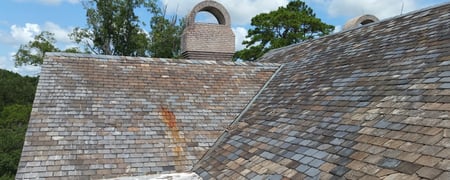
Weathering can significantly impact roofing materials, leading to a range of issues that might compromise the integrity and functionality of a roof. Here are some of the most common effects of weathering on different roofing materials:
Asphalt Shingles
Granule Loss: Exposure to rain and hail can wash away the granules on shingles, reducing their ability to protect against UV rays.
Cracking and Blistering: Fluctuations in temperature can cause asphalt shingles to expand and contract, leading to cracks. Overheating can cause blistering.
Curling: Aging shingles can begin to curl at the edges, which reduces their effectiveness in shedding water and can make them more susceptible to wind damage.
Metal Roofs
Corrosion: In areas with high moisture or salt exposure, metal roofs can corrode over time, especially if the protective coating is compromised.
Denting and Scratching: Hail, falling branches, or other impacts can dent or scratch the surface, potentially exposing the metal beneath to further weathering.
Fading and Chalking: The paint or finish on metal roofs can fade due to UV exposure, and chalking (a powdery residue) can occur as the coating degrades.
Tile Roofs (Clay or Concrete)
Cracking and Breaking: While tiles are generally resistant to many weathering processes, they can crack or break due to impact from debris or sudden temperature changes.
Surface Erosion: Over many decades, the surface of clay tiles can erode under constant exposure to rain and wind, leading to a loss of the finer details and surface finish.
Wood Shingles or Shakes
Rot and Decay: Wood is vulnerable to rot if it remains damp, particularly if not properly treated with preservatives.
Warping and Splitting: Changes in moisture levels can cause wood shingles to warp or split, compromising the roof's ability to shed water effectively.
Moss and Algae Growth: In damp, shaded environments, wood roofs can support the growth of moss and algae, which can retain moisture against the roof surface and accelerate decay.
General Impacts Across All Roofing Materials
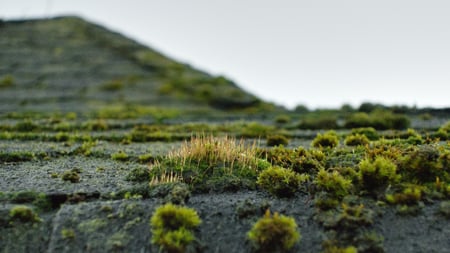
Aesthetic Degradation: Weathering generally affects the appearance of roofing materials, making them look old or worn. This can impact the overall aesthetic appeal of a property.
Increased Maintenance Costs: As materials degrade, the need for maintenance and eventual replacement increases.
Reduced Energy Efficiency: Deteriorated roofs may lose their ability to reflect heat or insulate a home, leading to higher energy costs.
Leaks and Water Damage: As roofing materials break down, they are less able to prevent water ingress, potentially leading to leaks that can cause extensive damage to the interior of a building.
Handle Your Weathering Roof With Care
As you now know, weathering is a natural process that can really take a toll on roofing materials. Whether it's the sun beating down, rain pouring, or the occasional hailstorm, over time, all roofs will show signs of wear and tear. Asphalt shingles might lose their protective granules, metal could start to show signs of rust, and those beautiful clay tiles might crack or chip.
Even sturdy materials aren't immune to the relentless day-to-day exposure to the elements. This wear isn't just cosmetic, either. Over time, it can lead to more serious issues like leaks, increased energy bills, and even structural damage if not addressed. That’s why keeping up with regular roof maintenance isn't just about keeping your roof looking good; it's about extending its life and ensuring it keeps protecting your home as effectively as possible.
A little attention can go a long way in mitigating the impacts of weathering! So, if your roof is a bit overdue for some professional TLC, be sure to hit the “Schedule an Inspection” button down below, and one of our experts will get your roofing system back to its original glory in no time!
My name is Mitch, and I have over 10 years of roofing experience. I enjoy my career in the service industry because I love helping others take care of their homes and businesses. With over 10 years in the roofing industry, my success comes from my honesty and integrity during my roof inspections. I do my best to listen to the needs of my clients and strive to provide an awesome client experience.


